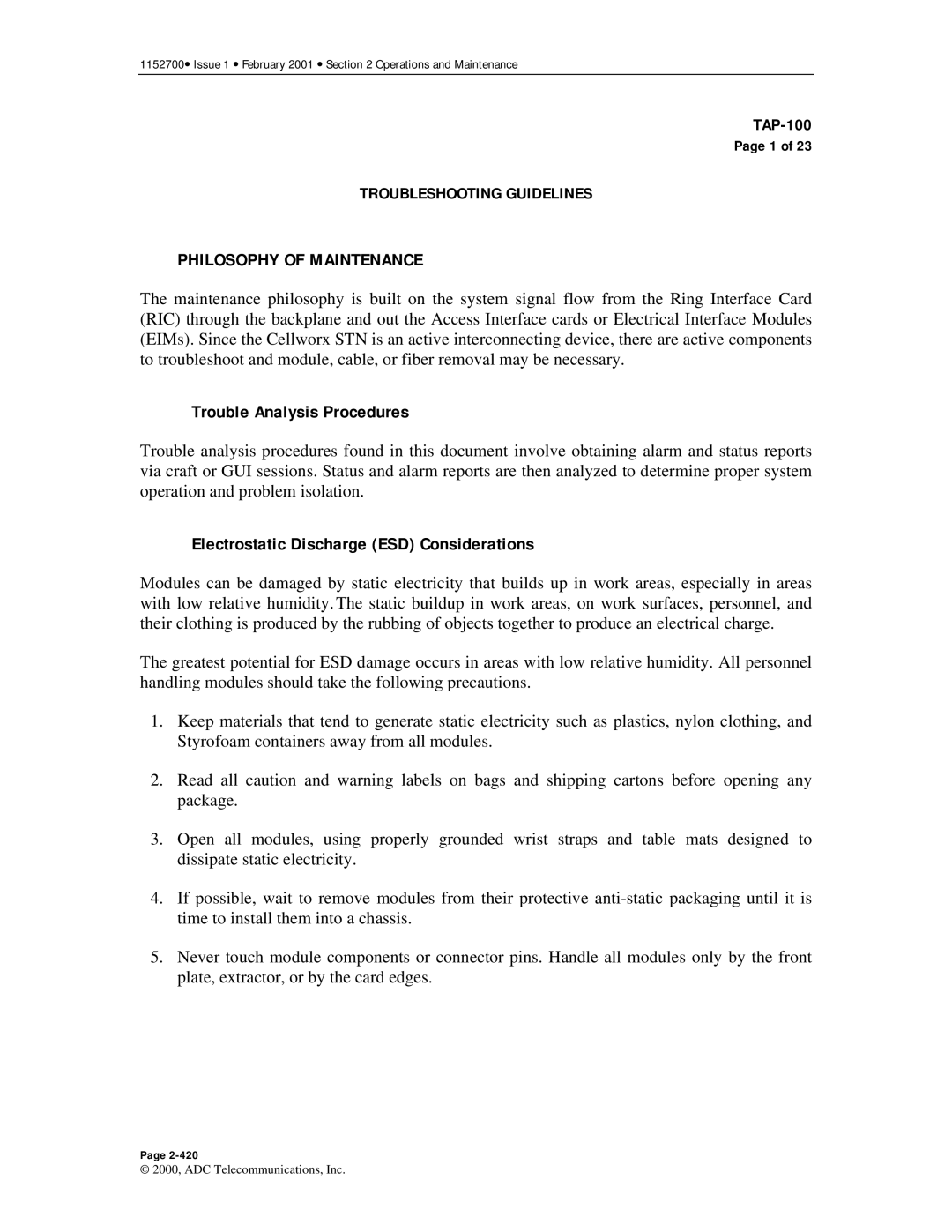1152700• Issue 1 • February 2001 • Section 2 Operations and Maintenance
Page 1 of 23
TROUBLESHOOTING GUIDELINES
PHILOSOPHY OF MAINTENANCE
The maintenance philosophy is built on the system signal flow from the Ring Interface Card (RIC) through the backplane and out the Access Interface cards or Electrical Interface Modules (EIMs). Since the Cellworx STN is an active interconnecting device, there are active components to troubleshoot and module, cable, or fiber removal may be necessary.
Trouble Analysis Procedures
Trouble analysis procedures found in this document involve obtaining alarm and status reports via craft or GUI sessions. Status and alarm reports are then analyzed to determine proper system operation and problem isolation.
Electrostatic Discharge (ESD) Considerations
Modules can be damaged by static electricity that builds up in work areas, especially in areas with low relative humidity. The static buildup in work areas, on work surfaces, personnel, and their clothing is produced by the rubbing of objects together to produce an electrical charge.
The greatest potential for ESD damage occurs in areas with low relative humidity. All personnel handling modules should take the following precautions.
1.Keep materials that tend to generate static electricity such as plastics, nylon clothing, and Styrofoam containers away from all modules.
2.Read all caution and warning labels on bags and shipping cartons before opening any package.
3.Open all modules, using properly grounded wrist straps and table mats designed to dissipate static electricity.
4.If possible, wait to remove modules from their protective
5.Never touch module components or connector pins. Handle all modules only by the front plate, extractor, or by the card edges.
Page
© 2000, ADC Telecommunications, Inc.
